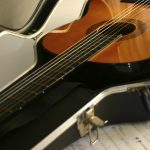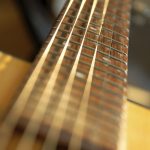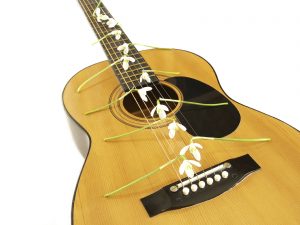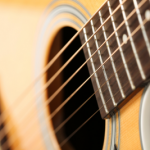Pupils often pose me a wide variety of questions related to the care and maintenance of their instrument. I have listed a few of the more common questions I have received over the years and have tried to provide some helpful information to address these.
Acoustic guitars are sensitive to weather conditions and therefore should not be placed in direct sunlight or in areas that are subject to high levels of humidity. If at all possible, they should be kept in their hard case until the instrument is required.
Electric guitars are not as sensitive to weather changes as acoustic guitars however, the large majority of wooden instruments are subject to weather changes and should be stored in their hard case until played.
Another handy accessory is a guitar stand which can be used during practice sessions and sometimes performances. The stand allows the instrument to be cradled in a properly constructed stand that prevents the guitar from falling over although the instrument is still exposed to folks bumping or knocking it accidentally.
Preventing cracks, scratches and other unwanted maladies
Whether your instrument is an electric guitar or an acoustic instrument, it requires adequate protection while being  transported or moved around. This requires a good case for the purpose which generally means a ‘hard’ shell case.
transported or moved around. This requires a good case for the purpose which generally means a ‘hard’ shell case.
Many pupils are faced with budgetary constraints when purchasing their first instrument and so store and transport their instrument in material or plastic bags that offer some protection from in climate weather however, do little to protect the instrument from unintentional knocks and bumps. My consistent recommendation to these pupils in this situation is to begin with a ‘bag’ but progress as quickly as possible to a hard case.
In the case of acoustic instruments, knocks and bumps can seriously affect the guitar and be troublesome to repair, if they can indeed be repaired! Also read the next section for more information…
Maintaining the surface of the instrument
 Most instruments require little if any treatment of the varnished / polished areas of the guitar. However, if the instrument is an acoustic guitar and is kept in a very dry climate, the wood may suffer extreme dryness and become subject to cracking.
Most instruments require little if any treatment of the varnished / polished areas of the guitar. However, if the instrument is an acoustic guitar and is kept in a very dry climate, the wood may suffer extreme dryness and become subject to cracking.
In such climates, it may be advisable to use a humidity accessory or very occasionally apply a well designed / produced oil to the wood. The best counsel I can offer in these instances is to discuss your personal situation with a reputable music dealer and gain advice on their product range and how to use it to best effect.
Researching the available product range via the internet is also a good idea. This allows you to familiarise yourself with the range of products available before proceeding with your purchase. Discussing the matter with your teacher also helps to educate you and gain counsel from more experienced musicians who have walked the same path.
All these folks will also guide you regarding how and where to apply whatever product you have selected for your instrument.
What strings should I use on my guitar?
 This is an area of struggle for virtually all pupils and quite often, professional musicians. Beginner pupils struggle more with deciding what type of string or which brand best suits their instrument somewhat more than experienced guitarists.
This is an area of struggle for virtually all pupils and quite often, professional musicians. Beginner pupils struggle more with deciding what type of string or which brand best suits their instrument somewhat more than experienced guitarists.
This is largely due to the fact that the instrument is fitted with a set of strings on purchase and most pupils are reluctant to change these for fear of either carrying out the process incorrectly, or, ‘making an error’ and purchasing strings that are not suitable for their guitar.
My suggestion to my pupils is always to carry out thorough research and speak to the experts before proceeding. I have quite often recommended a range of strings to a pupil who reports back at their next lesson that none of the strings were available or the model of string is out of stock. As a result they purchased a different brand as recommended by the store assistant.
It is also important to recognise that electric guitar strings are different to acoustic guitar strings and, classical guitar strings are very different to acoustic steel string guitar strings. So to narrow things down somewhat, her are some suggestions:
* research what is available in your area by referring to your local music store
* discuss the options with your teacher and obtain their counsel on what might be best suited for your instrument and finally,
* include internet research to familiarise yourself with what is available / possible for your instrument
Also, remember that if you are playing your instrument regularly then the strings should be changed more often. How often will depend on what kind of strings you are using i.e. nylon or steel and how often you are playing the instrument. I would encourage you to discuss this with your teacher or music store.
Lastly, maintain your instrument in pitch i.e. correctly tuned, as this maintains the correct consistent tension ‘pull’ on the neck which reduces the chance of the neck of your guitar bending.
Well, I hope that these few brief points have provided you with some valuable information on caring and maintaining your guitar in peak condition. If you have any specific questions regarding this topic, please feel free to forward your question to me via the contact page.





